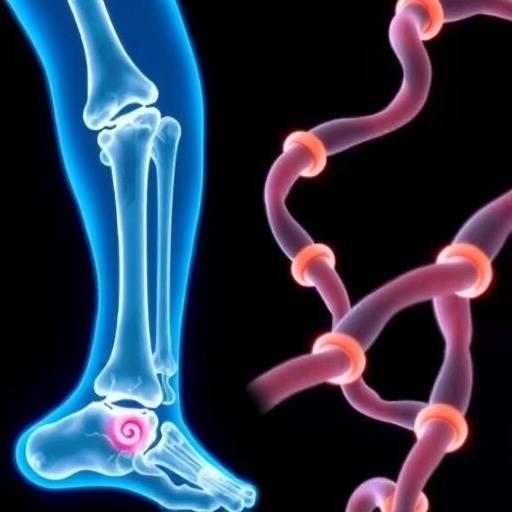In the United States, the adoption of children is a deeply significant social practice that reshapes countless lives. However, the assumption that adopted children uniformly experience the same levels of health insurance coverage as their non-adopted peers is misleading. A decisive study conducted by researchers at the University of Maryland’s School of Public Health has revealed stark disparities in health insurance coverage among adopted children, contingent on the nature of their adoption—domestic or international—and the citizenship status of their adoptive parents. Analyzing over five years of data, spanning 2018 to 2022, this research highlights gaps that call for nuanced policy changes aimed at safeguarding vulnerable groups within America’s adopted child population.
The study addresses a complex facet often overlooked in policy discussions: the heterogeneity within the adopted child population. Contrary to prior research that aggregated all adopted children into a single demographic, the University of Maryland team’s approach disaggregates the adopted population into four distinct cohorts: domestically adopted children, internationally adopted children adopted by U.S. citizens, internationally adopted children adopted by non-U.S. citizens residing in the United States, and children living with extended biological relatives such as grandparents rather than their biological parents. This refined breakdown unveils patterns in health coverage that are both surprising and concerning from a public health perspective.
One of the most compelling findings of this research is the disproportionately high rate of uninsured children within the group identified as internationally adopted by non-U.S. citizen residents. Nearly one-third of these children—30.7 percent—lack any form of health insurance. This figure is alarming when juxtaposed with other groups of adopted children and non-adopted children, who demonstrate significantly lower uninsured rates. The high uninsured prevalence in this cohort signals systemic barriers to health care access that merit urgent attention.
.adsslot_l3q7OgHiRC{width:728px !important;height:90px !important;}
@media(max-width:1199px){ .adsslot_l3q7OgHiRC{width:468px !important;height:60px !important;}
}
@media(max-width:767px){ .adsslot_l3q7OgHiRC{width:320px !important;height:50px !important;}
}
ADVERTISEMENT
Delving deeper into the socioeconomic characteristics of the adoptive parents in this group elucidates contributing factors to these insurance disparities. Those adopting internationally while not holding U.S. citizenship tend to be racially congruent with the adoptees and—critically—are more likely to live below the federal poverty line and to rent rather than own their homes. This intersection of socioeconomic disadvantage with citizenship status underscores the multifaceted nature of the insurance coverage gap, revealing how structural inequities compound health vulnerabilities among adopted children.
The intricacies of health insurance eligibility in the United States also play a pivotal role in these disparities. Children adopted internationally by U.S. citizens generally qualify for public insurance programs such as Medicaid and the Children’s Health Insurance Program (CHIP), akin to U.S.-born children. Conversely, children adopted by non-citizen residents often fall outside the eligibility frameworks of these public support systems, which exacerbates their likelihood of being uninsured. This discrepancy underscores the significance of citizenship and legal status within the broader ecosystem of health care accessibility.
Furthermore, children living with extended biological relatives, rather than their birth parents, constitute another group exhibiting notable health insurance vulnerability. Approximately 7.3 percent in this demographic are uninsured, a rate substantially higher than that of children living with biological parents. This group is also disproportionately represented in lower-income families, further compounding economic and healthcare access challenges. The findings suggest that the absence of a direct parent in the household may be a proxy for other stability and support deficiencies, which, coupled with economic hardship, translate into poorer insurance coverage.
The analysis leverages comprehensive data from the American Community Survey (ACS), encompassing over three million children, both adopted and non-adopted, living in diverse household structures. This large-sample, multi-year dataset allows for robust statistical modeling that controls for confounding variables such as income, race, and citizenship status. The researchers’ methodological rigor adds confidence to the observed patterns, enabling policymakers and public health experts to draw actionable insights from the study.
Interestingly, children adopted internationally by U.S. citizens fare the best in terms of insurance coverage, even outperforming non-adopted children in coverage rates. This outcome reflects the accessibility of public insurance programs to this population and suggests that where legal and citizenship conditions are favorable, the health care safety net for adopted children functions effectively. It also accentuates the policy gap that leaves internationally adopted children by non-citizen residents without adequate support.
Domestic adoptees also enjoy relatively strong coverage, with a majority holding private health insurance. Their public insurance rates are similarly higher than those of uninsured groups. This contrasts sharply with children adopted internationally by non-citizens, indicating that citizenship intricacies intersect deeply with adoption status to influence healthcare coverage outcomes.
The research team highlights that adopted children generally present with varied and complex health needs, often exceeding those of non-adopted peers. These needs may include developmental delays, cognitive challenges, or physical disabilities, making reliable health insurance coverage a crucial component of ensuring sustained health and well-being. As such, insurance disparities translate directly into health inequities, which the study argues must be addressed with targeted policies and programs.
A central recommendation emerging from this study is that policy frameworks should not treat “adopted children” as a monolithic population. Instead, distinctions based on adoption type and adoptive parent citizenship status should guide the tailoring of interventions and resource allocations. This differentiation would enable health systems and social service agencies to better identify and support subpopulations at highest risk of being uninsured, thereby promoting equity in health access among all American children.
The findings also signal a call to action for ongoing research to explore the underlying structural, legal, and social barriers that produce these disparities. While the data reveal clear patterns of inequity, the causative mechanisms warrant further examination. Recognizing and addressing these root causes would empower a more holistic approach to child health equity status, ensuring that all children—regardless of adoption pathway—have equitable opportunities for care.
In conclusion, this pivotal study reframes our understanding of health insurance coverage among adopted children by revealing that significant disparities exist within adoption subgroups in the United States. With almost one-third of internationally adopted children by non-citizen residents uninsured, and compounded challenges evident among other vulnerable groups, the imperative for policymakers to devise inclusive, nuanced, and effective interventions has never been clearer. Health equity for adopted children depends on transcending simplistic categorizations and embracing the complexity of adoption dynamics in the U.S. health care landscape.
Subject of Research: People
Article Title: Health Insurance Coverage Varied By Children’s Adoption Status In The US, 2018–22
News Publication Date: 4-Aug-2025
Web References:
Health Affairs Article DOI
Image Credits: UMD
Keywords:
Health disparity, Health insurance
Tags: adopted children health coveragechildren living with extended familycitizenship status and health insurancedata analysis on adoption trendsdomestic versus international adoptionhealth insurance disparitieshealth insurance gaps in adoptionnuances in adopted child demographicspolicy changes for adopted childrensocial implications of adoptionUniversity of Maryland research findingsvulnerable populations in adoption






